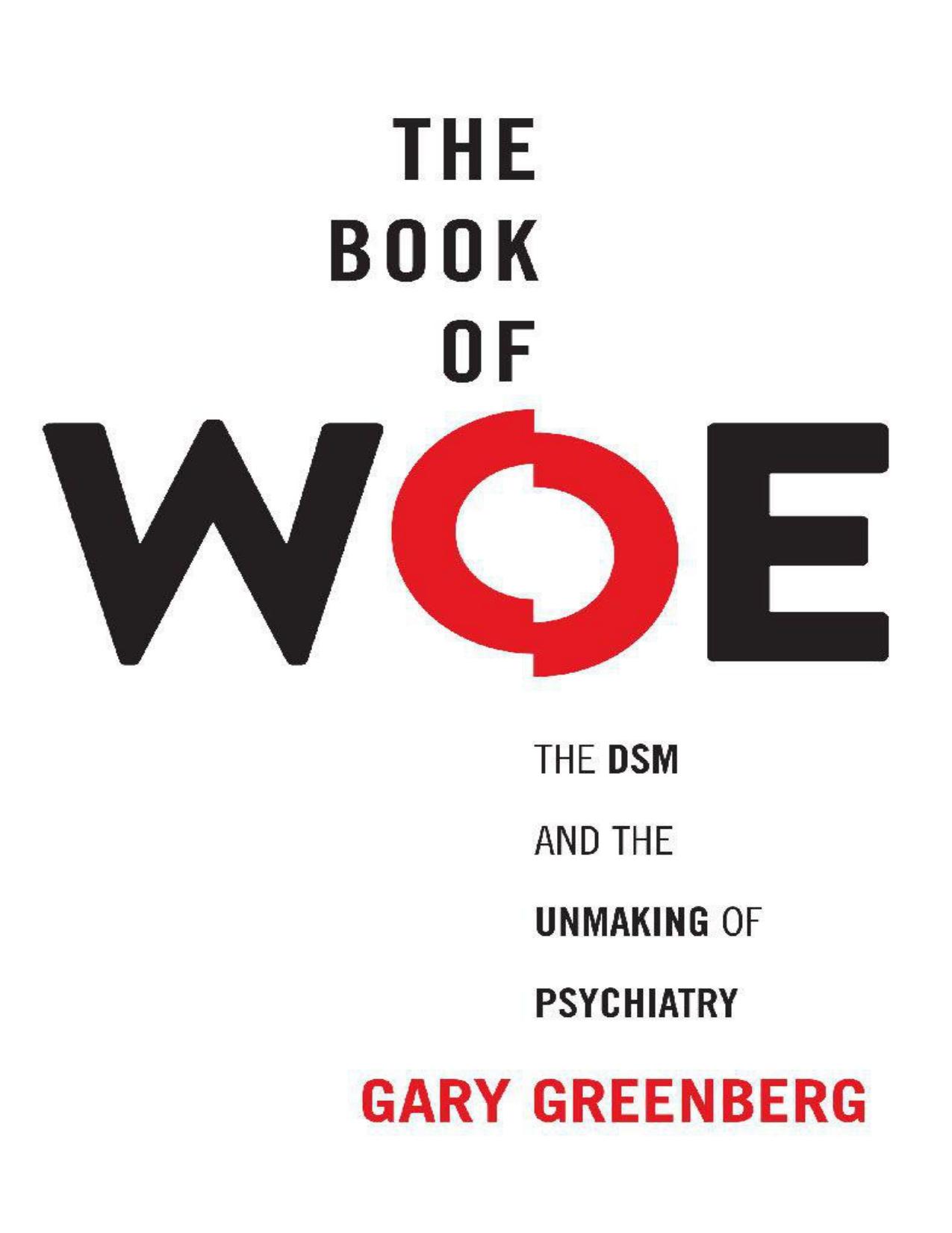The Book of Woe: The DSM and the Unmaking of Psychiatry by Gary Greenberg

Author:Gary Greenberg
Language: eng
Format: mobi, azw3, epub, pdf
Tags: Non-Fiction, Psychology, Science
ISBN: 9780399158537
Publisher: Blue Rider Press
Published: 2013-05-02T07:00:00+00:00
Which of the following productions was not filmed in Hawaii?
A. Hawaii Five-O
B. Baywatch
C. Jurassic Park
D. Indiana Jones and the Raiders of the Lost Ark
“There’s supposed to be music,” Regier says, and looks at the tech guy, who flips a switch. A steel drum song breaks out on the speakers. Which seems a little more “Hey, mon,” than “Aloha,” but Regier doesn’t seem to mind.
We cast our ballots, and as soon as the calypso stops, percentages for each answer pop up on the screen. Baywatch leads the way. “Fifty percent of you know your TV series,” Regier says.
Regier explains what is about to happen. Emily Kuhl, an APA staffer, and William Narrow, the psychiatrist in charge of research for DSM-5, will be reenacting a session that occurred some weeks ago. Kuhl will “channel” the patient, Regier explains, while Narrow conducts his “regular clinical interview.”
Narrow begins by telling us that the patient’s name is Virginia Hamm. The lame joke falls flat in the empty room. Bearded and balding, Narrow is laconic, even shy, and not a natural showman; he looks like he’d rather be almost anywhere else than on this, or any, stage. Virginia, he continues, had come to the clinic and been assigned to a computer. She’d typed in her demographics and described her chief complaint as Obsessive-Compulsive Disorder and depression. She had filled out the Cross-Cutting Measures, Levels 1 and 2—the dimensional measures designed to assess symptoms that are not necessarily part of the diagnosis. She had indicated how regularly she felt “irritated, grouchy, or angry” or “nervous, anxious, frightened, worried, or on edge,” how often she heard voices or thought of hurting herself, whether she sniffed glue or drank alcohol, or if she had ever found herself “not knowing who you really are or what you want out of life.” She’d clicked through the items on the Altman Self-Rating Mania Scale and the Patient Health Questionnaire—Somatic Symptom Short Form, and the PROMIS (Patient Reported Outcomes Measurement Information System) scales for anxiety and depression. She had confided in the computer about her “getting along with people and participation in society,” about her “communicating/understanding,” her “getting around and self-care and life activities.” After about a half hour of pointing and clicking, she had pushed the last button, sending the information to another computer, this one at Vanderbilt University, home of the REDCap (Research Electronic Data Capture) system, which had tabulated the answers and generated a report, returning it at the speed of light to her clinician. We are holding a printout of the results in our hands, a thick sheaf of papers telling us what is wrong with Virginia Hamm, if not how to cure her.
Narrow is going through the results out loud. “Two point nine on the depression measure, anxiety score is in the moderate range, somatic symptoms score is zero, suicidality is one,” he reads from the laptop sitting on the table between him and the fake Virginia. “No reported problems with cognition or memory. Emotionality above average, antagonism is above average, disinhibition is below average, schizotypy is below average.
Download
The Book of Woe: The DSM and the Unmaking of Psychiatry by Gary Greenberg.azw3
The Book of Woe: The DSM and the Unmaking of Psychiatry by Gary Greenberg.epub
The Book of Woe: The DSM and the Unmaking of Psychiatry by Gary Greenberg.pdf
This site does not store any files on its server. We only index and link to content provided by other sites. Please contact the content providers to delete copyright contents if any and email us, we'll remove relevant links or contents immediately.
When Breath Becomes Air by Paul Kalanithi(7284)
Why We Sleep: Unlocking the Power of Sleep and Dreams by Matthew Walker(5674)
Paper Towns by Green John(4183)
The Immortal Life of Henrietta Lacks by Rebecca Skloot(3838)
The Sports Rules Book by Human Kinetics(3605)
Dynamic Alignment Through Imagery by Eric Franklin(3507)
ACSM's Complete Guide to Fitness & Health by ACSM(3476)
Kaplan MCAT Organic Chemistry Review: Created for MCAT 2015 (Kaplan Test Prep) by Kaplan(3432)
Introduction to Kinesiology by Shirl J. Hoffman(3309)
Livewired by David Eagleman(3145)
The River of Consciousness by Oliver Sacks(3004)
Alchemy and Alchemists by C. J. S. Thompson(2920)
The Death of the Heart by Elizabeth Bowen(2916)
Descartes' Error by Antonio Damasio(2753)
Bad Pharma by Ben Goldacre(2738)
The Gene: An Intimate History by Siddhartha Mukherjee(2503)
Kaplan MCAT Behavioral Sciences Review: Created for MCAT 2015 (Kaplan Test Prep) by Kaplan(2496)
The Fate of Rome: Climate, Disease, and the End of an Empire (The Princeton History of the Ancient World) by Kyle Harper(2447)
The Emperor of All Maladies: A Biography of Cancer by Siddhartha Mukherjee(2441)
